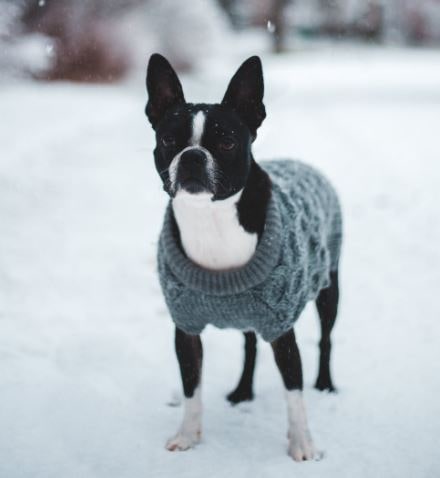My Top 6 Dog Training Tips
January is National Dog Training month so I thought I would share some tips on training our furry four-legged friends. All dogs need an owner that will accept the responsibilities that come with training them to be socialized and obedient family members.
Training a dog requires more than teaching verbal commands. When working with your dog, it is important that we understand that communication is key, we speak two different languages and it is easy for dogs to become distracted, confused or misunderstand what we are asking them to learn.
The first step to good dog training is to ideally begin training when they are young( around 8weeks of age) but this is not always possible especially with rescue dogs. Please know that when you first are establishing yourself as the teacher and your pet as the student, you must have a quiet non-distracting environment to train in. Otherwise, you will waste time trying to get your pet's attention or your pet will not quite get what you are asking them to learn.
Here are my top 6 Dog Training Tips:
Tip #1: Where do you start in training?
When working with your pup at home, the most important commands for them to learn are:
- Come
- Sit
- Stay
- Down.
Teaching these commands will not only work on bettering your pup’s manners, but can also help to keep it safe. For example, should your pup get startled and run off, it could end up lost or put in harm’s way. But, if it knows what to do when commanded to “come,” hearing your call may help it redirect its behavior and return to you.
Tip #2. Be Consistent:
Training requires working in a fair and consistent manner that teaches the dog not only how to behave, but also that their good behavior is expected in all settings.
Teaching your dog what to do along, with what not to do, will help them to better understand and recognize the behaviors you want from them. For example:
- When working on a command of stay and the dog moves, don’t get upset; just put it back into the stay position and continue the training.
- Later, when the command to stay is again given and the dog follows the command, make sure to praise the animal so it knows it did as you wanted and that you are pleased it has done its job.
For your dog to understand what is expected of it, all family members should follow the same steps when working with the dog. Without consistency, they will become confused about what it is to do. For example:
- If the rule is established that the dog is only to go to the bathroom in the far corner of the yard, then every time the animal needs to go to the bathroom, it should be taken to the far corner of the yard as part of its training.
- Allowing the animal to use an inside potty pad on bad-weather days sends the dog a message that says it is okay to potty inside if it wants.
- When the dog then goes to the bathroom in the house and receives correction, it will become confused on what you are expecting it to do.
Tip #3. Always complete the Training Exercise
When working on an exercise, make sure to stick with the training until the puppy does as it is told. If you don’t, if you allow it to have its way, the pup may look at the exercise as something it doesn’t need to do.
Training Tip #4. Learn to communicate by reading your pet’s body language.
Owners often become frustrated when their pet behaves inappropriately. Before responding to the situation, take a moment to think about why the unwanted behavior occurred. Dogs use body language to communicate their wants and needs. When they behave improperly, there is a good chance that the signals for the unwanted behaviors were present but were overlooked or missed.
The following offers examples of the way dogs communicate by body language:
- Play time!
- Running up to you
- Barking
- Backing up with a wagging tail
- I need to go to the bathroom!
- Furiously sniffing
- Going around in circles
- Starting to squat
- I’m being cautious! Or I’m nervous! Stay back!
- Stiffly wagging tail that is moving slowly
- Tail may be held very high or is hanging down
- Animal may be leaning slightly forward, almost on its tiptoes
- I’m friendly!
- Happy, wagging tail
- I’m afraid! I may be aggressive!
- Stiff body
- Tail tucked down and ears held back
- Arched back
- Hair may stand up along the ridge of their back
- Cowering
- Intense gaze
- Low growl
- I’m nervous! I’m timid!
- Submissive urination - when animal gets excited and then squats and urinates
- In puppies, this could mean that their bladder has not yet fully developed
- In older animals, this reaction occurs when the animal feels it is about to be corrected or feels nervous if being approached by a stranger.
- Submissive urination - when animal gets excited and then squats and urinates
To be successful, training requires clear communication between both owner and animal. While it is important to help the dog know what we expect of them, it is equally important that we pay attention to what they are trying to tell us.
Tip #5. Let them know they did what was asked.
Rewarding your dog will reinforce the point of the training exercise, as well as build their self-confidence and increase their desire to please.
There are many thoughts regarding methods of positive reinforcement that utilize treats, toys, and praise. A reward does not have to be a food treat; it could be praise, time spent playing a game, or being given a special toy.
Keep in mind that different dogs have different personalities, and what motivates one may not motivate another. As you spend time with your pup, you will learn what motivates them best.
Every puppy needs help understanding what is expected of them. There is no doubt that working with your pup will require your patience and time, but the end result will be worth it!
Training Tip #6 : Understand that not all dogs are A students
It is easy for pet parents to become frustrated with their dogs when they feel they have repeatedly taught their dog not to do an unwanted behavior and their dog continues to seem like they are not learning. Bear,my 1 1/2 year old dog still occasionally gets into garbage cans. She is still young and struggles with the only pet boredom syndrome. Some dogs seem to excel at bad behavior. Dogs that are bored or lonely often:
- Go to the bathroom in the house
- Get into the trash
- Tear up blankets, pillows, or clothing
- Chew on things not meant to be chewed!
If your dog falls into this category, it may benefit from daily walks and toys that challenge them. With my dog Bear, I simply remove the trash from her, say no and give a command” go get your toy” and she usually runs and gets a toy to play with. When I find her playing with a toy I praise her. Obedience training that focuses on manners for behaving when in the house can also be of benefit and take the pressure off of you. Also, if your dog has unwanted or destructive behaviors that occur when you are not at home, you may want to discuss the possibility of separation anxiety with your Veterinarian.
Training and enjoying your pet go hand in hand. It is always worth the patience and effort necessary to develop good manners and habits in your pet. There are many resources available to pet owners to help you train your dog into a wonderful companion and family member. My tips are the tried and true methods of dog or puppytraining that can have great results when taught with patience and consistency.
To Your Pet’s Good Health,
Dr. Barry






